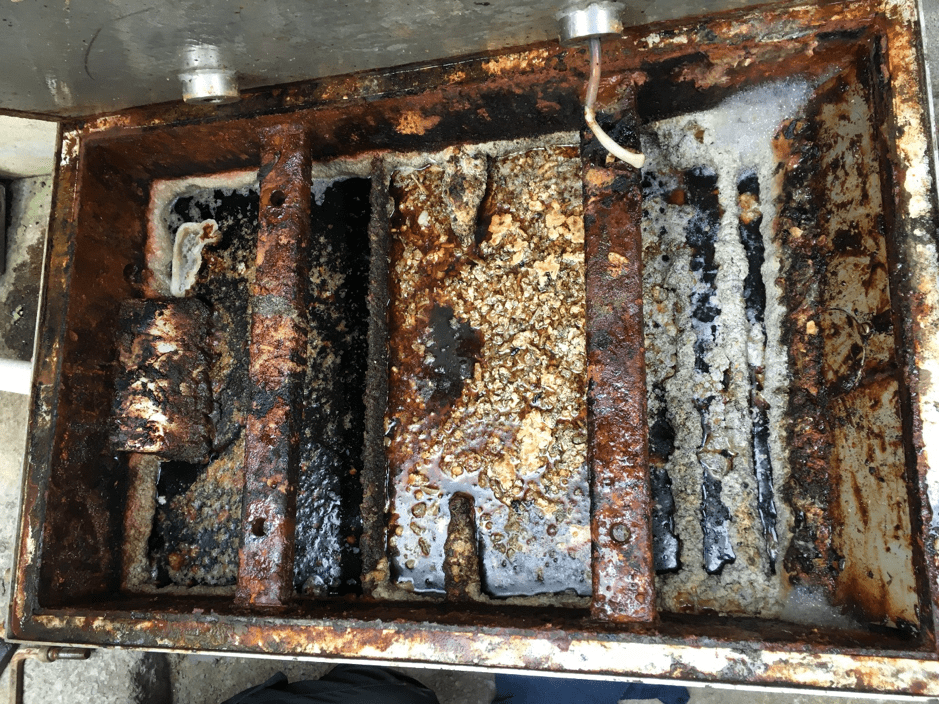
4 questions to know if your grease trap is working

Is your grease trap working correctly?
Although required by law some FSE’s (food service establishments) do not have a grease trap installed in their premises – shocking but true. Whilst most do, the owners/managers may not be aware that if the grease trap is the wrong size for the FOG waste, or it’s not in the correct location and even more importantly not regularly maintained – they might as well not have one at all. Out of sight maybe but it won’t be out of mind for long!
How do grease traps work?
Most grease traps are simple single-stage units designed to retain fats, oils & grease (FOG) by settlement. Given enough time oils, water and food particle solids will separate within the unit and clean water should exit to the drain. The retained waste will build up over time and requires regular emptying of waste for disposal. if you don’t regularly service and empty your grease trap once full, all fats, oils, and grease will go directly to the drain – now consider the ramifications for that!
How do I ensure my grease trap is compliant?
Compliance has two basic components; does the FSE have a grease interceptor, and is the grease interceptor being maintained frequently enough?
To answer that, we would have to begin by evaluating how much grease a given FSE is producing. Let me give an example of a small restaurant that should help us understand:
If a restaurant serves 100 meals per day it is estimated that each meal generates 15 grams of fats, oil or grease (FOGS) per meal in the sink equating to 15g x 100meals = 1.5kgs entering the grease trap each day. If the restaurant is open 7 days a week, that’s 10.5 kgs entering the grease trap each week. If the trap retains 50% of the FOGS, then 750 grams per day are going down the drain and into the public domain. Multiply this by the times between emptying (which is normally when someone complains about the smell 😵) You would imagine that this is a worst-case scenario 750 grams x 90 days = 67 kgs of FOGS in the drain – one-third of a ton in a year – unfortunately it’s not! Remember this is just the example of a small restaurant with a ‘functional’ grease trap, imagine the larger FSE’s and the harm that this is doing to the environment and public health.
What is happening to non-compliant FSE’s?
Irish water plan to roll out a nationwide enforcement campaign next year based on the Polluter Pays Principle which means all FSE’s must have a valid discharge licence and a FOG programme in place. Irish Water Inspectors will carry out tests on four wastewater samples each year with a maximum of 100 parts per million allowable. Fines of €600 – €800 per sample failure will be levied on the establishment – if your grease trap is not working correctly, or worse you don’t have one, you could be liable for hefty fines.
Ecotec can help to ensure you are compliant, we are a solution-based grease trap management service business and we have one for every budget. Don’t wait around for the worst to happen, contact us today and be ahead of the game.











